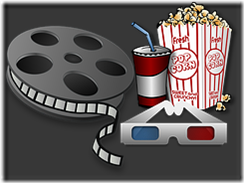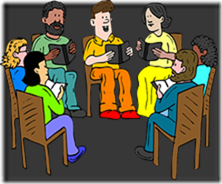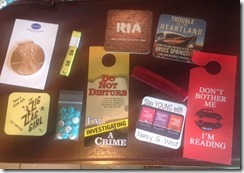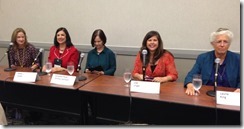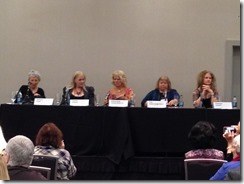Terry Odell
When we first moved to Colorado, we rented a tiny studio apartment while looking for a permanent home. One evening, our landlords invited us up for a glass of wine and some conversation. She is a sculptor who works primarily in stone. She mentioned it was interesting we were both artists.
Frankly, I’d never considered myself an artist, but we discussed our creative processes. There’s an old saying that in order to carve a block of stone into an elephant, you simply chip away everything that doesn’t look like an elephant. In writing, you keep adding until you get the elephant.
If writing were like sculpting, it would mean being able to change what comes next, but not what came before. Scary. Really scary. When the sculptor asked how I created a book, what my preparation process was, did I outline the plot, or develop the characters, I answered that I knew very little when I first started writing.
She said she worked the same way. She might have a very simple sketch—no more than a line drawing, when she started, and a vague idea of the finished product—but the actual sculpture was dictated by the stone. She starts working and lets the stone show her the way.
That sounds very much like my own writing style. I joked about how my characters were always surprising me, and that the discovery was as much fun as the final product. On that, we were in total agreement.
But imagine if you started writing your book and couldn’t go back to fix things. Once you chip away that piece of marble, it’s gone and you can’t reattach it to the sculpture. I don’t think there is such a thing as a ‘first draft’ for her. Some artists might make models first, using a different, “less valuable” kind of medium, but she likes to get right to it.
I remember going to a RWA chapter meeting, and as we shared where we were with our writing since the last meeting, one woman said, “I’m on Chapter 30 and have only 5 chapters left to go.” I was flabbergasted. How did she know what was going to go into each chapter, and that much in advance? How did she know her book was going to be 35 chapters long? A recent book ended up going on for about 4 chapters more after I thought I was writing the final chapter. And my editor asked me to expand even more. Glad I wasn’t a sculptor!
But when you do finally reach the end, if you’re like me, your book is full of “extra stuff”. It’s time to play sculptor and chisel away the words, paragraphs, scenes that aren’t helping your book look like the elephant it’s supposed to be. My first attempt at writing a novel came in at 143,000 words. The agents and editors I spoke with said 100,000 was the absolute top limit they’d even look at for a debut author.
Time to cut. You start with the jack hammer, removing any scenes that aren’t moving the story forward (even though they’re probably your favorites). “Does it advance the plot?” becomes your mantra. This is where you’re probably letting everyone know how much research you did. What constellations are visible in the night sky at 10 PM in Salem, Oregon? What’s the story behind Orion? What are the landmarks visible from the passenger seat while driving north on I-25 between Denver and Cripple Creek? What kind of cattle are grazing in the pastureland? How many coal trains chug by each day, carrying how much coal? Ask yourself two questions. 1: Does the reader need to know this. 2: Does the reader need to know this now? That 143,000 word book, Finding Sarah, was published at about 85K.
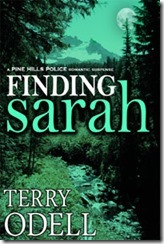
Another question to ask is “Does it come back?” In my book, Deadly Secrets, I had a scene where my heroine comes into her diner and tells the cop hero that she thinks someone’s in her upstairs apartment. The cop tells her to get down behind the counter. There’s mention of a pistol kept near the register. However, we never actually see the gun, other than a few thoughts about who it belongs to, and that almost everyone in the small Colorado town probably has one. Since the gun was never needed and never showed up again … SNIP. “Get behind the counter” is all that’s needed. Readers, especially mystery readers, don’t like a parade of red flags that have no place in the story.
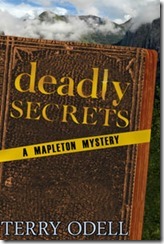
After you’ve tossed those big chunks of stone, you can get out the chisel and look at your narrative. Have you told what you’ve already shown? Trust your readers—they’ll get it. Are you repeating yourself even when you’re showing?
Once you’ve got the story essentials, you can get out the little grinders and brushes to get rid of those sneaky crutch words—the ones that creep into your manuscript when you close your file. (A handy writer’s tool for this is Smart Edit, which will find overused words you never saw coming.) Check for ‘filler’ words. Just, really, well, very, some (and all its variations). When we speak, we use ‘filler words’ to give our brain time to think. Most of the time, they’re not needed on the page and merely slow the read.
Once you’ve got your elephant cleaned and polished, it’s time to get it out there on exhibit, whether to an agent, editor, or beta reader.
What’s your writing style? I’m an ‘edit as I go’ writer, but even then, I have to go back and get rid of everything that doesn’t look like an elephant.
<><><>
Thanks so much to Nancy for inviting me to be a guest at The Kill Zone. I’m thrilled to be here.
<><><>
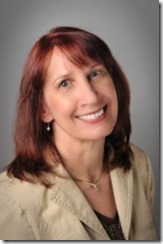 From childhood, Terry Odell wanted to “fix” stories so the characters would behave properly. Once she began writing, she found this wasn’t always possible, as evidenced when the mystery she intended to write turned into a romance, despite the fact that she’d never read one. Odell prefers to think of her books as “Mysteries With Relationships.” She writes the Blackthorne, Inc. series, the Pine Hills Police series, and the Mapleton Mystery series. You can find her high (that’s altitude, of course—she lives at 9100 feet!) in the Colorado Rockies—or at her website.
From childhood, Terry Odell wanted to “fix” stories so the characters would behave properly. Once she began writing, she found this wasn’t always possible, as evidenced when the mystery she intended to write turned into a romance, despite the fact that she’d never read one. Odell prefers to think of her books as “Mysteries With Relationships.” She writes the Blackthorne, Inc. series, the Pine Hills Police series, and the Mapleton Mystery series. You can find her high (that’s altitude, of course—she lives at 9100 feet!) in the Colorado Rockies—or at her website.

